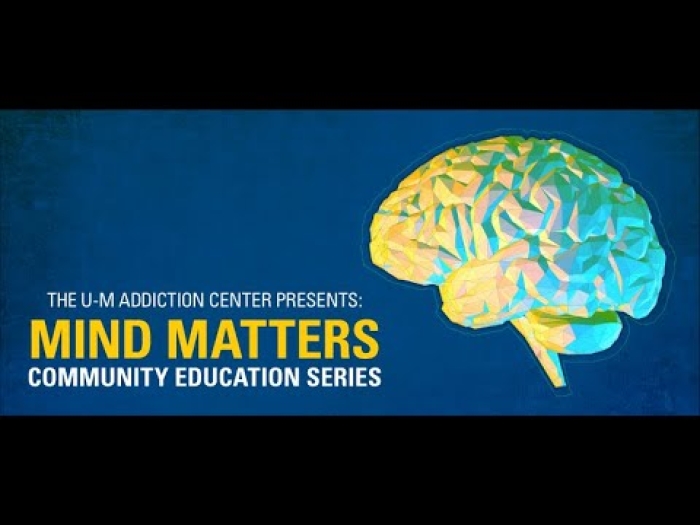Despite naloxone recommendations for people who take high-dose opioids, or who have a history of opioid problems, study finds those at risk aren’t getting the overdose rescue drug.
8:39 AM
Author |

Only a tiny minority of people at risk for an opioid overdose actually are prescribed a drug that could save their lives, a new study suggests. And the odds of having a dose of the rescue drug were very low among some of the most at-risk groups, including those who had already survived a previous opioid overdose.
In all, less than 2% of people who had at least one of the main risk factors for opioid overdose had filled a prescription for the life-saving drug naloxone by the last 6 months of the study period. Naloxone prescribing may be missing a large proportion of those at highest risk, the authors say.
Naloxone can reverse an overdose of any type of opioid, from prescription pain medicines to heroin.
The new study, performed by a team from the University of Michigan and VA Ann Arbor Healthcare System, is published in the Journal of General Internal Medicine. It uses data from a national sample of people covered by private health insurance.
SEE ALSO: Opioid-Related Suicides and Overdose Deaths Have More Than Doubled Since 2000
National guidelines issued in 2016 by the Centers for Disease Control and Prevention call for physicians to prescribe naloxone to anyone who takes high doses of opioid pain medicine and to anyone who has other major overdose risk factors including a history of opioid use disorder or opioid overdose. People who take opioids at the same time they're taking a type of sedative called a benzodiazepine should also receive it, because the two drugs can interact.
Further work is needed to help guide naloxone prescribing to patient populations at highest risk for overdose.Lewei (Allison) Lin, M.D., M.Sc.
Opioid overdose can occur when someone takes too much of an opioid-containing drug accidentally or on purpose, or when an opioid interacts with another prescription drug, alcohol or an underlying health condition. Naloxone, given by injection or nasal spray, can reverse the effects of the opioid.
LISTEN UP: Add the Michigan Medicine News Break to your Alexa-enabled device, or subscribe to our daily updates on iTunes, Google Play and Stitcher.
Rising, but still low, rates
While the new study shows that naloxone prescription fills by adults with private health insurance rose during the study period from January 2014 to mid-2017, the percentage of patients receiving it was still very low.
Only 1.6% of those taking high doses of prescription opioids had filled a naloxone prescription in the last six months of the study period, and the percentage was no higher for those who had already survived an opioid overdose or had a formal diagnosis of opioid use disorder, some of the most concerning risk factors for overdose.
"The vast majority of naloxone prescribing is to patients who have received opioid prescriptions, but there are other groups at high risk for overdose but not receiving prescription opioids, including people using only street drugs, that warrant further attention," says Lewei (Allison) Lin, M.D., M.Sc., an addiction psychiatrist at the U-M Addiction Center and the VAAAHS who led the research team.
"Over the course of the entire study period, we also found that although both high-dosage opioid prescriptions and having an opioid use disorder were associated with receiving naloxone, the same wasn't true for those with a history of overdose or those with other substance use disorders," she explains. "Further work is needed to help guide naloxone prescribing to patient populations at highest risk for overdose."
MORE FROM THE LAB: Subscribe to our weekly newsletter
Lin notes that during the study period, many states enacted 'standing orders' for naloxone that allow anyone to receive a dose of it from a pharmacist, to have on hand in case they or someone near them experiences an opioid overdose. Community-based naloxone distribution programs also grew during the study period.
More about the study
Lin and her colleagues used anonymous insurance data, including outpatient pharmacy prescription fills, to do the study.
In addition to documenting overall trends in naloxone prescription fills, they performed a detailed comparison of two subsets of patients: nearly 4,000 people who had filled both an opioid prescription and a naloxone prescription during the entire study period, and more than 19,815 who had filled only an opioid prescription during that time.
The study data included all prescriptions filled and billed to the private insurance plans that contribute data to the Clinformatics database the researchers used. So it wouldn't include naloxone received from community locations or pharmacists but not billed to insurance. The Clinformatics database draws from all 50 states.
In addition to Lin, the study's authors are Chad M. Brummett, M.D., Jennifer F. Waljee, M.D., M.P.H., M.S., Michael J. Englesbe, M.D., Vidhya Gunaseelan, MBA, M.S., MHA and Amy S. B. Bohnert, Ph.D., MHA. Brummett, Waljee and Englesbe co-direct the Michigan Opioid Prescribing Engagement Network, where Gunaseelan is a team member. Bohnert co-directs the Program for Mental Health Innovation, Services and Outcomes, which Lin is affiliated with. All except Gunaseelan are members of the U-M Institute for Healthcare Policy and Innovation and the U-M Injury Prevention Center.
SEE ALSO: As Opioids Kill More Veterans, Study Shows Treatment Needs
Paper cited: "Association of Opioid Overdose Risk Factors and Naloxone Prescribing in US Adults," Journal of General Internal Medicine. DOI: 10.1007/s11606-019-05423-7

Explore a variety of healthcare news & stories by visiting the Health Lab home page for more articles.

Department of Communication at Michigan Medicine
Want top health & research news weekly? Sign up for Health Lab’s newsletters today!





